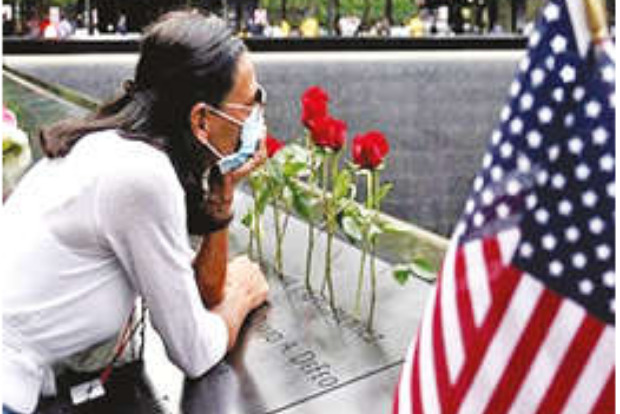In the shadow of the towers
Over the weekend, many of us who run into our friends or family might be asked a simple, albeit weighty question - do you remember where you were when 9/11 happened?

New Delhi
Chances are we might recollect the collective horror we felt at the exact moment twenty years ago, when an aircraft crashed into the South Tower of the World Trade Center in Manhattan, New York City, even as we were reeling from the disbelief of witnessing one of the twin buildings - the North Tower blowing plumes of smoke, in the aftermath of a passenger airplane flying into it.
It was the moment when journalists and military strategists, fumbling to get to the bottom of - what at the beginning appeared to be a pilot error, were hit by the realisation that America was under attack. The series of coordinated attacks by al-Qaeda terrorists on American soil on September 11, 2001, saw two other passenger flights being hijacked, and redirected - one which crashed into west side of the Pentagon, the US military HQ; and the other, a United 93 airplane, whose passengers attempted to regain control of the aircraft, and diverted its course, ultimately crashing into Pennsylvania. The hijackers’ target could have been the White House or the US Capitol.
What followed was a day that lived in infamy, in the history of the US, and the world. Not since the attack on Pearl Harbor during World War II had such an assault on America been perpetrated, and that too, during a time of relative peace. It would be an understatement to say that 911 changed the world. It did more than that. The attacks changed the course of modern warfare, its impact on civilian lives and to a great extent the coverage of news events in conflict zones.
The footage of airplanes crashing into those iconic monuments that were beamed relentlessly by TV news channels, were the proverbial equivalent of bringing terror right to one’s doorsteps, or rather the living room. It was an unprecedented coverage of a nation under attack, as cameras captured every second of the proceedings. The year 2001 was also when internet penetration had begun picking up steam globally. And no sooner had then President George W Bush declared the War on Terror by invading both Afghanistan, known to shelter al-Qaeda terrorists, and Iraq, which was erroneously suspected of harbouring weapons of mass destruction, did the next wave of terror break out.
The modus operandi involved the unparalleled reach of the Internet. In a shift of approach to targeting civilians, the terrorists began picking off journalists from reputed western media houses, such as Daniel Pearl and James Foley and began releasing a series of terror videos chronicling the final moments of the victims. It sparked a debate globally, on the limits of what was printable in newspapers and what could be broadcast on TV, not just out of respect for the deceased, but even in the interest of national security. Experts agreed that exhibiting such videos would only play into the hands of terror outfits.
In India, we had our own 9/11 moment in the aftermath of the 26/11 attacks in Mumbai in 2008. Many local news channels were lambasted for their round the clock coverage of the storming mission that ensued, which as per military strategists had allowed terrorists to gauge the response of the Indian forces, and adapt their operations, thereby causing massive damage to life. A question that looms large right now is if the world is a safer place two decades after 9/11? The answer might be an emphatic no. Like a grandmaster clocking a move on a chessboard, America has pulled out of Afghanistan, with its objective of instating democracy in an ungovernable region blown to tatters. A new world order might be in the making. But this time around, America has chosen to take a step back, avoiding military engagement, and keeping its citizens safe. Twenty years seems a good enough period to understand which battles can be picked, and which are the ones to be walked away from.
Visit news.dtnext.in to explore our interactive epaper!
Download the DT Next app for more exciting features!
Click here for iOS
Click here for Android



